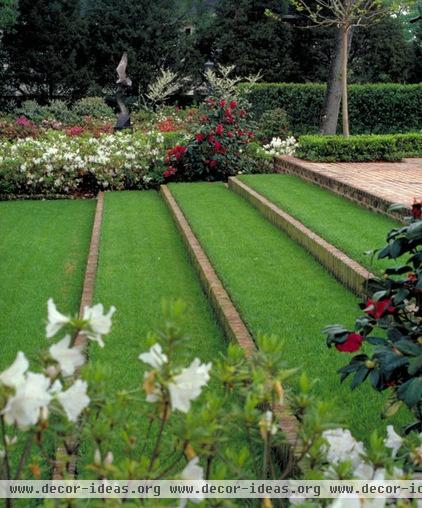How to Plant a New Lawn From Sod
http://decor-ideas.org 11/23/2013 19:50 Decor Ideas
Looking to start a new lawn fast? Whether you've recently finished building a house and need a lawn to go with it, or simply want to establish a fresh lawn in your current home, starting a lawn from sod is a fairly easy project for the average homeowner. But, as with most things, it does take knowing a few tricks to get the healthy lawn you're aiming for, so follow these guidelines.

Depending on where you live, sod can be laid nearly year-round if the weather is mild enough. Spring and fall are typically the optimum times, however, because the temperatures are mild and the chances of rain are higher, leading to better root development. Check with the experts in your area for the best times to lay sod in your landscape.
Why start a lawn from sod?
• You want instant gratification.
• You want a type of lawn grass that is not easily grown from seed (for instance, Bermuda, zoysia, centipede).
• You want to quickly establish a new lawn in spring, sumer or fall (people in warm climates can install sod throughout fall, while those in cold climates should install early in the season).
• You have a big lawn budget. Sod is sold by the piece or by the pallet, and costs vary widely depending on the type of grass. Plan to spend anywhere from 8 to 30 cents per square foot if you are installing it yourself.

How to Plant Sod
1. Prep the ground. Properly prepare the area before you lay the sod. Incorrectly prepared ground will result in a lawn that is lumpy and bumpy, creating more than simply aesthetic issues. Bumpy lawns encourage improper drainage, leading to unhealthy grass, and an uneven grass surface can result in tripping and falling.

2. Choose and order your sod. Get recommendations from your local extension office for grass types suggested for your area. Many warm-season grasses are perfect for installing using sod pieces or rolls, while other types of grass are better started from seed. If you have a small area to work with, you can likely buy a small amount of sod pieces or rolls at your local home improvement store or landscape supply yard. If you need larger quantities, you'll need to place an order with a grass supplier.
Plan to lay your sod lawn on the day that it is delivered.

3. Lay the sod. Once your ground is prepared, lay the sod pieces along a straight line such as the driveway or a sidewalk. Push the joints of the sod pieces tightly against one another, avoiding overlapping or gaps, and stagger pieces like you would with rows of bricks. Use a sharp carpet knife to cut pieces for irregularly shaped areas or to fit around irrigation heads or plants, and water in your sod within 20 minutes of laying it.

4. Establish a mowing and watering schedule. During the first week after laying your new sod, water four times to a depth of 1 inch each time, and mow after six to sven days. During the second week water three times and mow on the seventh day, and during the third week water twice and mow on the seventh day.
Never remove more than one-third of the height of your leaf blades in any single mowing. Plan to mow your grass when it's 2⅓ inches to 3 inches high, and set your mower height to 1½ inches to 2 inches. Always mow with sharpened blades for the best result.

Additional sod tips:
• Always inquire about delivery charges when ordering your sod.
• After laying or rolling your sod, you can opt to roll it with a sod roller — a water-filled drum that you roll over the sod so the roots make good contact with the soil. Your sod can still get established without it, but it may take a little longer.
• For the first two to three weeks, until your new sod has had a chance to establish a good root structure, avoid walking on it.
• For a week or two after that, avoid very heavy activity, such as heavy foot traffic, concentrated activities and dog traffic.
• Be sure to gather more specific information and recommendations about sod care in your area and for the particular type of grass sod you'll be laying, as well as more precise timelines on laying your sod.
Looking for less grass? Ideas to save water and effort
Related Articles Recommended












